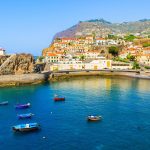JCKL to renovate Rossio block
An entire downtown Lisbon block is to be restored and refurbished by JCKL Real Estate Investments (Portugal) in an €80 million investment.
The project, which has been given the green light by Lisbon Municipal Council, will see the development of a block between the Rossio and Praça da Figueira squares in what will see another part of Lisbon’s historic city centre rehabilitated.
The street level area of the block will have shopping and commercial units but is still awaiting detailed planning permission.
The project will be carried out by the architect studio Contacto Atlântico whose CEO and owner, André Caiado told Vida Imobiliária that the project has been “approved in 12 months because the project reflects a strategy of conciliation between the interests of the various parties involved, DGPC, Lisbon City Council and the developer JCKL.
“Rossio in its Marquis de Pombal style provides a rare opportunity to breathe fresh life into two squares: Rossio and Praça da Figueira in a site where that has been no significant development since 1970, only dilapidation,” he said.
In a press release, the developer said that Rossio ‘Pombaline’ will be restored in its original configuration in accordance with the Deeds, Titles, Maps and Plans of 18th century Lisbon as it was laid down following the Great Lisbon Earthquake of 1755 and produced by the then Technical Office of the Lisbon Royal Public Works.
This group of buildings will be exclusively occupied by shops and commercial spaces, including an anchor store with the aim of attracting shoppers and life to the area thereby contributing in an active way to the revitalisation of the heart of Rossio and the centre of the capital. The historic shop Pérola do Rossio will be maintained.
Patrícia Rodrigues, who heads the marketing of the development project explains, “Our aim is to renovate and restore (the block) respecting and preserving the memory of the most iconic and identifiable original façades of the building, maintaining those parts which have a recognisable architectural and heritage value.”










